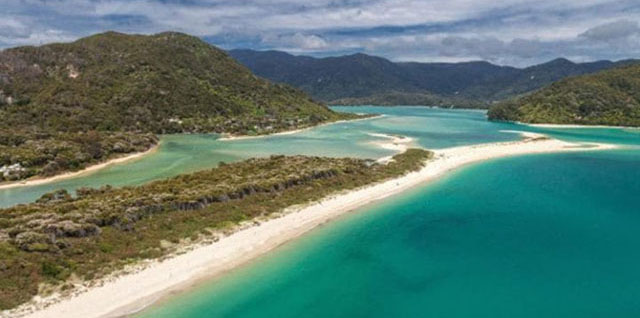(单词翻译:单击)
Most of us learn at primary school that there are seven continents, but the next generation (一代人) of kids may be adding one more to that list.
地球上有七大洲,这是我们大多数人在小学就学到的知识,但将来的孩子们学到的或许要比我们多一个。
According to a recent paper published in the Geological Society of America’s Journal by a group of researchers, “Zealandia” is a new continent that’s hidden beneath the ocean.
据一组研究人员近期在《美国地质学会期刊》发表的文章称,“西兰洲”是藏在海洋底下的一块新大陆。
Zealandia is estimated (估计) to be five million sq km, which is larger than every country in the European Union combined.
据估计,西兰洲大约有五百万平方公里,比欧盟国家的面积总和还要大。
Most of this massive (广阔的) area is covered by water, but its highest mountains already have their own name: New Zealand.
这片广阔的大陆,大部分都浸没在水中,但它的最高峰已经有了自己的名字:新西兰。
The small country is the only part of Zealandia that isn’t underwater, but the paper’s authors want the huge landmass (大陆) to be recognized worldwide as its own continent.
这个小小的国家仅是西兰洲唯一露出水面的部分,但该文章的作者们希望这块庞大的大陆能被全世界认可,成为一大洲。

“The scientific value of classifying (归类) Zealandia as a continent is much more than just an extra name on a list,” the researchers wrote in their paper.
“将西兰洲归为一大洲的科学价值绝不仅仅是多列出一个洲名而已,”研究者们在文章中写道。
“The Glossary of Geology defines (定义) a continent as ‘one of the Earth’s major landmasses, including both dry land and continental shelves (大陆架).’”
“地质术语表将大洲定义为地球上的主要大陆之一,包括陆地及大陆架。”
Scientists discovered Zealandia all the way back in 1995, then started extensive (广泛的) research on the area using underwater and satellite mapping technology. After completing their work, they were finally able to write a report suggesting that Zelandia be named a continent.
早在1995年,科学家们就发现了西兰洲,并通过水下技术和卫星绘图对该区域开展了广泛的研究。在研究完成后,他们最终写出了一份报告,建议将西兰洲定义为一块大洲。
But who decides on what is a continent and what isn’t? There is, in fact, no official organization that does. Some countries’ schools teach that there are six, or even five, continents. This changes depending where in the world the school is.
但由谁来决定什么是大洲,什么又不是呢?事实上,并没有任何官方组织来做这件事。在一些国家,学校教授的版本为六大洲,甚至五大洲。这一不同取决于这所学校在世界的哪个角落。
Due to their definition as a “continuous expanse (延伸) of land”, some classify Europe and Asia as the same continent – known as Eurasia. Schools in Russia and parts of Eastern Europe teach this.
由于一些人将大洲定义为“延绵不断的陆地”,他们将欧洲和亚洲视作同一块大陆 —— 称为欧亚大陆。俄罗斯和部分东欧学校就是这样。
And to make things even more confusing, France and Greece, as well as other countries, classify North America and South America as simply America.
让情况更加复杂的是,法国、希腊以及其他一些国家将北美洲和南美洲简单地划为美洲。
This argument over how land is defined has even stretched (扩展) into outer space. In 2006, the International Astronomical Union (IAU) decided that Pluto was no longer a planet, 76 years after its discovery in 1930. Experts argued that it no longer met the requirements needed to be called a planet alongside the eight others in our solar system. It was therefore renamed a “dwarf planet (矮行星)”, meaning that countless books, models and museum exhibits all over the world had to be updated (更新).
如何定义陆地的这一争论甚至还扩展到了外太空。2006年,在1930年发现冥王星的76年后,国际天文学联合会 (IAU)认定其不再是一颗行星。专家认为,它不再符合和太阳系中其余的八颗星球并称为行星的条件。因此,它被重新认定为“矮行星”,这也意味着全球无数的书本、模型以及博物馆展览都得更新。
But will the world take the same notice of Zealandia? The best way to tell is to keep an eye on our textbooks.
但世界是否会给予西兰洲相同的关注?得到答案的最佳方式,就是密切关注我们的教科书。


